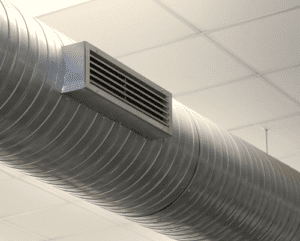It’s a surprising statistic: all together, commercial heating & air conditioning contributes to more than a third of the average company’s annual energy expenses. With 25% of those energy expenditures going to heat alone, it’s easy to see that there are genuine economic concerns at play here. When it comes to evaluating what options will deliver the best performance for your building, your choice matters. However, for many in the position of replacing or maintaining commercial HVAC systems, there are often lingering concerns: how do you make the right decisions and cut costs without incurring excessive maintenance over the unit’s lifetime or otherwise risking breakdowns?
There’s good news: at the end of the day, these systems are fundamentally simple, and acquiring the right hardware for your business can be easy with professional help. By following a straightforward process, you can unlock better comfort and improved efficiency for your business. Let’s demystify the world of commercial heating and cooling and shed some light on the important issues you should understand, starting with basic functionality.
How Commercial Heating & Air Conditioning Equipment Works
 When it comes to your air conditioning systems, the operational principles in commercial applications remain mostly the same as they do in residential scenarios. Closed-loop systems filled with refrigerants remove heat from air blown over coils by powerful fans, and this cooled air circulates throughout the building through ducts and out of vents. Roof units are a popular solution for providing complete coverage to an entire building. Smaller businesses may benefit from basic split systems with interior and exterior components, while bigger buildings will benefit from VRF units that can respond to more complex cooling needs.
When it comes to your air conditioning systems, the operational principles in commercial applications remain mostly the same as they do in residential scenarios. Closed-loop systems filled with refrigerants remove heat from air blown over coils by powerful fans, and this cooled air circulates throughout the building through ducts and out of vents. Roof units are a popular solution for providing complete coverage to an entire building. Smaller businesses may benefit from basic split systems with interior and exterior components, while bigger buildings will benefit from VRF units that can respond to more complex cooling needs.
In the realm of heating, the trusty old furnace remains the most popular choice — though there are new solutions on the rise, too. Today’s most popular choice of fuel for heating is natural gas, which is currently less expensive than fuel oil. Businesses may use either a completely gas-fired furnace to heat the air directly, or they may rely on gas-fired boilers. Boilers may also play a part in new hydronic heating systems, which circulate warm water through under-floor tubes, warming rooms evenly. In both commercial heating & air conditioning, understanding basic operation — and how it impacts efficiency — is easy, especially with qualified assistance.
Sizing Commercial Systems: The Biggest Challenge
The next major area that often mystifies business owners looking for the right HVAC solution is the wealth of jargon that surrounds furnace and AC capabilities. Do any amount of research into how to purchase a unit for your business, and you will hear time and again that “sizing” is the most crucial part of making a successful purchase. What does this mean?
Sizing refers to matching the power of an HVAC unit with the size of the building and its thermal needs. Think about it: a large shopping mall with big open spaces has much higher heating and cooling requirements than a medium-sized office building made mostly of enclosed areas. The critical measurement to keep in mind when sizing a unit is the BTU or British thermal unit. The higher a unit’s BTU rating, the more powerful it is — but an oversized unit can still prove problematic. Therefore, the best way to choose a new furnace or air conditioner is to consult with an HVAC supplier to assess your building.
Planning Today for Maintenance Tomorrow
“How often do I need to maintain my AC? When will my furnace break down?” These are just a couple of the most common questions heating & cooling services hear from commercial clients. While there is no simple way to know precisely when components will fail, HVAC maintenance is far from rocket science. In fact, it boils down to two simple steps: regularly change filters to keep systems free from dust while allowing the free movement of cleaner air, and invest in routine inspections. An annual or semi-annual inspection of your systems by your provider of choice will give you the option of engaging in preventative maintenance. Meanwhile, you’ll get an update on the overall health of the hardware from year to year. With a regular check-up, planning your maintenance budget is much simpler and less stressful.
Locate a Local Resource for In-Depth Information
When you dive into the world of commercial heating & air conditioning well-informed from the start, you’ll quickly discover that many of the most daunting challenges aren’t that difficult to navigate. However, before you make any final decisions about system layouts, HVAC hardware, or maintenance plans, the next step you should take is another relatively simple one: connect with a trusted local HVAC service provider. Not only will an appropriate contractor be able to answer all your questions in-depth and in specific relation to your business, but they can also supply the service and equipment you need. Explore your options today with a clear view of what your business needs.

